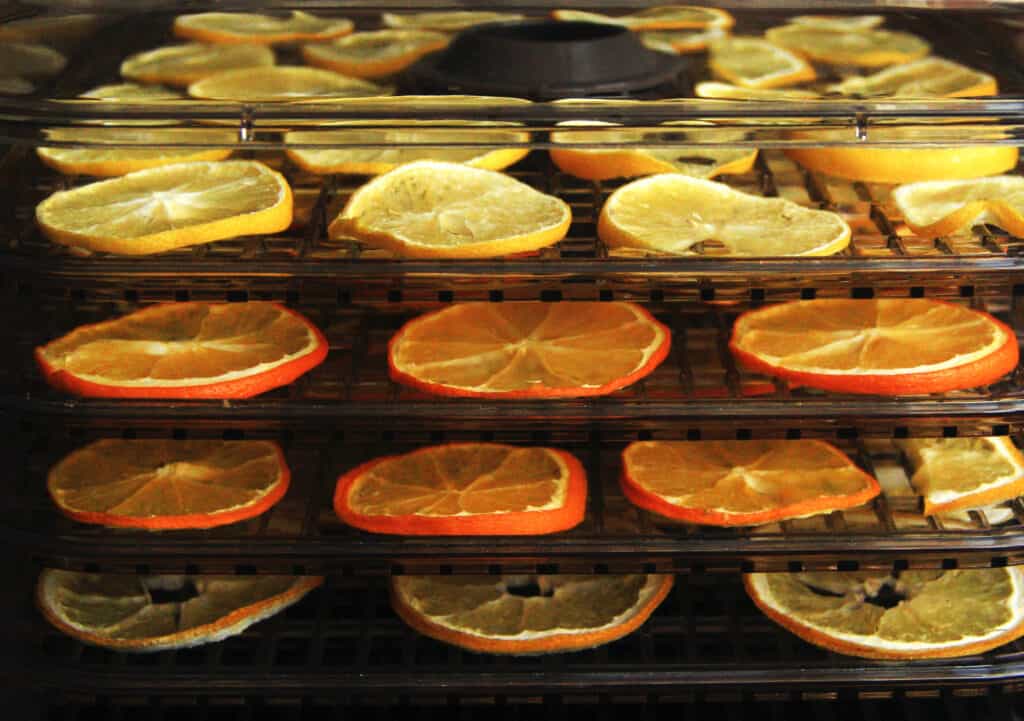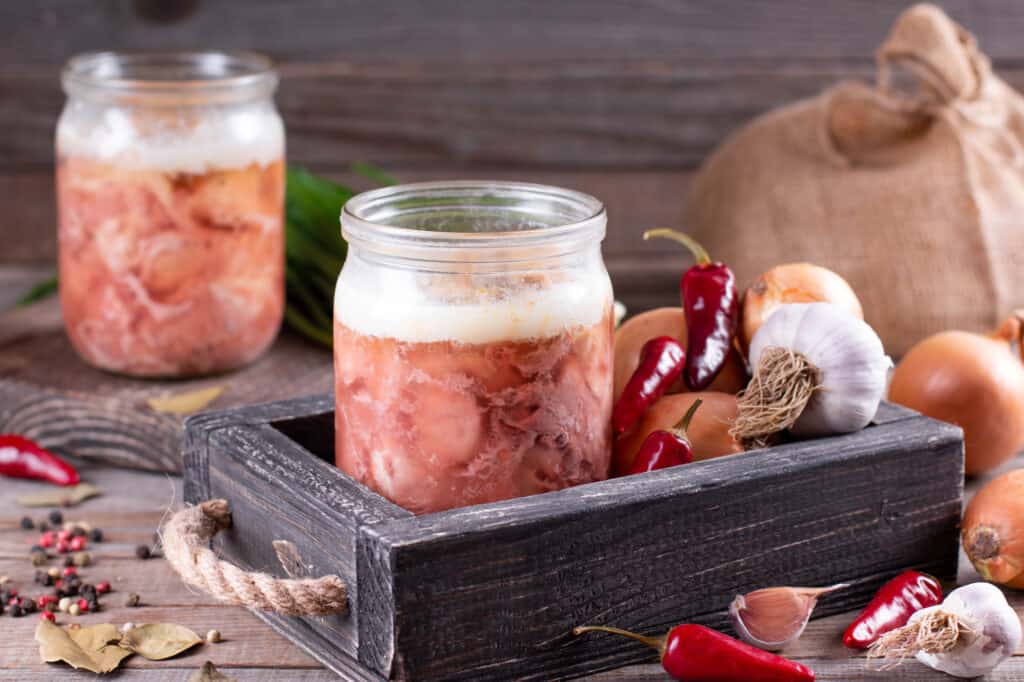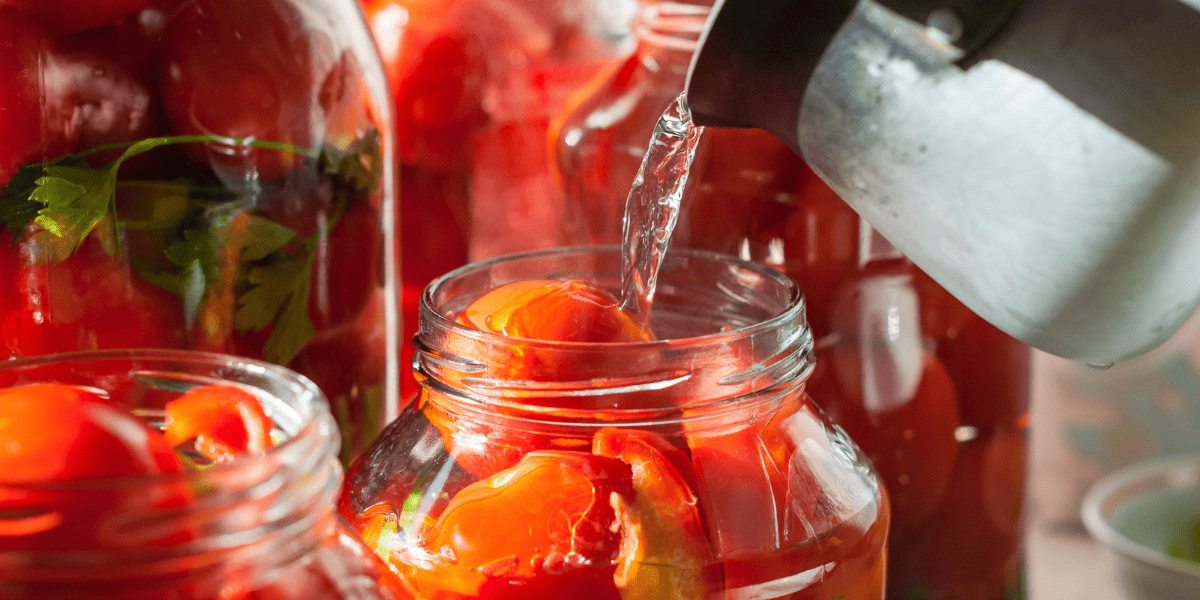“This magical, marvelous food on our plate, this sustenance we absorb, has a story to tell. It has a journey. It leaves a footprint. It leaves a legacy. To eat with reckless abandon, without conscience, without knowledge; folks, this ain’t normal.”
~Joel Salatin, American farmer, lecturer, and author
*This article was updated on 04-19-25 (see below).
By Jennifer Wolff-Gillispie HWP, LC
Feeding yourself and your family has been part of the human experience since the beginning of time. However, around the period of the Industrial Revolution, as more mothers joined the workforce, the need to put dinner on the table quickly, while working and caring for children, automatically became priority number one.
It’s important to acknowledge the “Industrialization of Agriculture,” stated by Johns Hopkins Center for A Livable Future:
“Over the brief span of the 20th century, agriculture underwent greater change than it had since it was first adopted some 13,000 years ago. Modern U.S. agriculture has been described as “the most efficient in the world, at least in terms of the dollar and cent costs of production.” The public health and ecological costs of industrialization, however, are not reflected in the prices of food.”
Families that had at one time grown and prepared most (or all) of their own food, now depended on outside sources to purchase their family’s resources.
Ultra-Processing for Convenience and Big Bucks
In the early 1900s, prepackaged and convenience foods began to hit the store shelves, and by the 1950s sales of these products were in full swing. Boxed meals and frozen dinners were not only convenient, but marketed as “cool” and futuristic, as families could sit together around their television and enjoy a complete meal—the “TV dinner,”—preassembled and hot out of the oven.
The new and modern accessibility of ready-made dishes saved time, and took the burden of preparation off working families. However, as time passed, generations began losing touch with the source of where their food came from. For many people, the art of how to prepare and preserve food from scratch was nearly lost.
Luckily, within the last few decades, there has been a growing interest in health and wellness which inspired a great number of people to take a closer look at how their food is being produced.
Sourcing quality ingredients that are non-GMO (organisms in food that are not genetically modified), organic, pasture-raised, and grass-fed have become synonymous with “good health.”
In an attempt to return to the unadulterated foods of your ancestors, you may have run into hefty price tags while sourcing ingredients. Due to lowered production costs, conventionally-grown foods saturated with herbicides and pesticides have become the most readily available and affordable option from the local grocery store down the road.
*UPDATE: 04-19-25
While the high prices of unprocessed foods at the grocery store or farmers market might make you hesitate to choose options like “organic,” “pasture-raised,” or “non-GMO,” it’s worth a second thought. In her article “Why the Way Our Food Is Grown Matters for Metabolic Health,” Casey Means, M.D., outlines four compelling reasons to skip conventionally grown food, invest in high-quality whole ingredients, and prepare your meals at home—for free.
- Your body’s microbiome is impacted by the soil your food is grown in.
- Poor soil from industrial farming practices results in nutrient-depleted food.
- Animals raised on healthy, nontoxic soil have more omega-3 fatty acids and phytochemicals.
- Pesticides are obesogens—a type of endocrine-disrupting chemical (EDC) that interferes with hormones, making you “fat and metabolically ill.”
How Green Does Your Garden Grow?
During the height of the 2020 pandemic, when job and food security were hanging in the balance, it was not unusual for individuals to explore how to be less dependent on a fragile food system. People from all walks of life began experimenting with growing food in their backyards.
A 2022 survey found that 2 out of 5 households grew a garden in 2021, some for the first time. Another study in 2020 claimed that 60% of people were cooking more at home.
With food prices up over 10% since 2019, stretching your budget, relying less on a corporate food system, and ensuring you’re eating the highest quality ingredients is a worthwhile mission.
Your first step is to cut out the middleman.
Previously, farmers relied solely on their own crops, or the crops of their neighbors through bartering, to meet their needs. With the exception of particular items they weren’t able to grow (flour, sugar, chocolate and coffee…), they grew and preserved most of what they wanted to eat.
While you may not have acres of land to produce enough food to feed yourself or your family for a year, you just may have enough space to grow a little bit of food to satisfy your daily consumption.
From window herb gardens to buckets of veggies on your patio, or large raised garden beds and in-ground market gardens, growing your own food can save you money, and shower you with food that is chemical-free, as you’ll be overseeing every aspect of food production.
Consider planting high yielding crops, such as tomatoes, zucchini, pole beans, cucumbers, and salad greens.
It may be an opportune time to “put food up”—an expression from the 1700s that means to preserve and store food—for yourself and your community of loved ones.
When it comes to “food security,” it is often found right around the corner, so be willing to reach out to your neighbors. Undoubtedly, fruit trees sit unpicked, so don’t hesitate to knock on a nearby door, and open the conversation regarding gleaning the unclaimed fruit.
“Picking leftover crops for the local community was an essential part of farm life and the harvest process for hundreds of years, until new private property laws and farming technology began to limit gleaners’ rights. It was common to see people out in fields picking leftover crops until after the end of World War II.”
Methods of Food Preservation
If you can’t grow your own garden, consider buying items in bulk from a local farmer or through a reputable direct sales company. You may receive a significant discount when you purchase bulk foods in season.
Concerned about storage space for big, bulky items? No need to worry, as foods such as meat, cheese, fruits, and vegetables purchased in bulk, can be divided into smaller portions, refrigerated or freezed, squeezed into small areas, and consumed at a later date.
Organic rice and flour can be stored long-term in large food-grade bins, and are more affordable than purchasing small packages. The key to buying in bulk and saving money is to only buy what you use regularly—your staple foods.
Other ways to preserve food for future use are to freeze-dry, water glass, salt cure, and smoke. Each of these creative preparations can be beneficial and useful in specific applications. Some may require special equipment, extended time to prepare, or a steep learning curve to master.

Shrink and Dry
One of the easiest ways to begin preserving food is to dehydrate. Herbs, for example, simply need to be washed thoroughly, bundled, and hung to dry for a few weeks.
Next level drying can be done using a dehydrator, which is a relatively low investment to help offset future food costs.
Fruits, vegetables, herbs, and meats can be dehydrated, and with proper storage last up to a year or more. Even without buying in bulk, preparing your own snacks such as dried fruits, veggies, and beef jerky can save you money and be a rewarding experience.
If using a dehydrator is not of interest, a low and slow oven or sun drying are options. Another great use for dehydrated fruits and vegetables is to use them to fortify soups, stews, grains, and smoothies. These items will add loads of flavor and nutrients to any dish you prepare.
Outside of their delicious culinary uses, dried herbs offer many health and medicinal benefits, and make great caffeine-free teas. For example, mint and lemon balm are beneficial for digestive issues, in addition to offering vibrant flavor to salads or desserts.
Sage, which means “to save,” may improve brain function and memory, in addition to seasoning meats and flavoring root vegetables.
While one small container of organic herbs from the store can cost between $2–$10, a package of 100 seeds may be priced at $3. The amount of herbs you can grow for minimal investment is grand.
There are a variety of ways growing herbs can add value to your life, including culinary use, medicinal preparations, and self-care purposes.
Put a Lid on It
One of the most overlooked ways to become self-sufficient in the kitchen is to learn how to can food. Canning (or more appropriately, “jarring”) can be divided into two categories: water bath canning and pressure canning.
Water bath canning is used to preserve items that are high-acid foods such as tomatoes, jams, and jellies, while pressure canning is usually reserved for bringing low-acid foods, such as vegetables, beans, and meat, to a high enough temperature—one that water bath canning alone can’t attain.
There is significant debate about this topic, as many families have been successfully water bath canning all of their foods for generations. According to the United States Department of Agriculture (USDA), to avoid botulism toxin you must pressure can all low-acid foods.
Canning is a great resource for you if you’re looking to cut waste, be creative, and store your food for months to come. Excess fruits and vegetables are easily canned in water, without a need for additives or preservatives.
These jarred items can last for years in your cupboard in a cool dark place. Soups and stews are also great canned additions to your pantry shelf, and make phenomenal “fast foods” you can heat and serve.
Bottom line: Spooning out high-quality food from a jar, months after you prepared it yourself is empowering.
Bone Broth: Every Bit Counts
Another “must have” item is home-canned broth. Whether it’s meat-based, vegetable-based, or a combination of the two, extracting every last bit of food is resourceful, and will help not create excess waste.
The health benefits of bone broth are numerous, such as providing easily absorbable minerals: calcium, phosphorus, magnesium, silicon, and sulphur, needed for multiple bodily functions, including bone health and strong immunity.
Good for the immune system, metabolism, and detoxification, consuming bone broth on a regular basis supports gut health. From Dr. Axe, co-founder of Ancient Nutrition:
“Studies show that gelatin is beneficial for restoring strength of the gut lining and fighting food sensitivities (such as to wheat or dairy). It also helps with the growth of probiotics (good bacteria) in the gut and supports healthy inflammation levels in the digestive tract.
A report published in the Journal of Clinical Gastroenterology indicates that gelatin effectively supports intestinal health and integrity. Plus, it displayed anti-inflammatory effects and is able to inhibit cytokines.”
When purchasing meat, select organic, pastured, whole chickens or grass-fed/grass-finished whole roasts with bones in. It is almost always more economic to buy larger cuts and break them down yourself. Portion meat into smaller sections to freeze and use later.
You can cook your meat (for instance, a whole chicken) and carve the meat off the bone when it’s time to serve, while retaining the bones for broth. Alternatively, you can debone before cooking your meat, and save the raw bones which can be roasted later before making broth.
A reusable freezer bag or container inside your freezer is a handy and convenient way to store the bones. Keep a bag for poultry, one for beef, and one for vegetables, etc.
When you prepare onions, garlic, carrots, potatoes (limit or it will be too starchy), mushrooms, squash, tomatoes, or artichokes, you’ll inevitably have peelings or even roasted winter squash “shells” you discard: Save them. They make a great addition to your liquid “gold.” Note that cruciferous vegetables can become very pungent so use sparingly.
It is important to keep in mind that all vegetables need to be thoroughly washed first (even onions and garlic), and never save anything that looks moldy or rotten. Items that would normally be composted or thrown away can be turned into a rich and delicious broth, and the vegetables can be composted (or fed to your flock of chickens).
Once you have saved enough bones and vegetables, place in a stock pot or crock pot and cover with filtered water. Allow to simmer on low for 8-24 hours depending on the amount you are making and the density of the bones. Beef will take longer than chicken, and veggies alone require the least amount of time.
Additions such as ginger, turmeric skin, and herb stems are great as well, and will give your dish a specific flavor profile. Take that into consideration when you create your broths. You may like to make different batches for various flavor combinations. Anywhere you would add water to a dish, you can swap for your broth, loaded with vitamins and minerals.
Feeling sick? Homemade broth is a wonderful food to have ready to go if you’re feeling under the weather because it’s packed with collagen, and as mentioned, has an abundance of nourishing and healing qualities for the gut and immune system.

Fermentation: Generating Energy for Living Cells
Another way to preserve your food is through fermentation. There are a variety of foods you can grow in your garden that can be preserved in this way. You may be familiar with lacto-fermented items like sauerkraut and kimchi (made from cabbage), but almost all vegetables can be fermented, with the addition of a little salt and some time.
One of the most trendy foods to ferment is bread. Ironically, it’s not new at all, as this was the manner in which bread rose before the advent of commercial yeast. A common fermentation method today is to create an active sourdough starter with just flour and water. As long as you keep tending to it, it will provide indefinite loaves of pleasure.
In addition to the amazing taste of fresh sourdough bread, the process of fermentation helps predigest the gluten in the bread and provide gut-healthy bacteria.
Baking your own bread costs pennies on the dollar compared to what it costs to purchase the same quality product in a store or bakery. If you are new to baking, invest time in learning the ropes by reading books or watching “how-to” videos. If you love bread, this is a skill well worth researching.

Get Up Close and Personal With the Food on Your Table
Implementing “lost arts” may come with challenges, including time, resources, and adequate space for projects. However, as one amazing home gardener-turned-homesteader, Jessica Sowards of Roots & Refuge Farm said, “Turn your waiting room into your classroom.”
The first step to applying new skills is taking the opportunity to learn about them. You might have “aha” moments or discoveries, such as realizing your family is spending too much money every month on salad greens, and curiosity begs you to wonder how you might grow them yourself.
Maybe you’re done buying canned beans, loaded with sodium, preservatives, and ingredients you can’t pronounce. Instead, opt to learn how to make and can your own beans from dried varieties.
Finding what fits your lifestyle, meets your needs, and matches your interests may take some time, but if you stay open to the process, you might be pleasantly surprised where food preparation and DIY preservation might take you.
~
Published on February 09, 2023
If you’d like to contact A Voice For Choice Advocacy, please email media@avoiceforchoice.org.
If you would like to support the research and health education of AVFC editorial, consider making a donation today.

